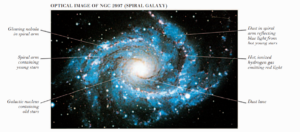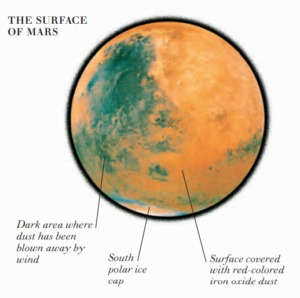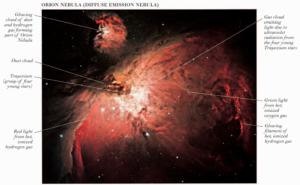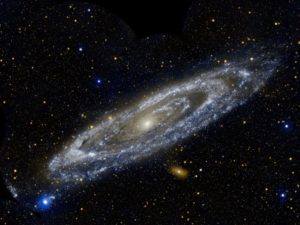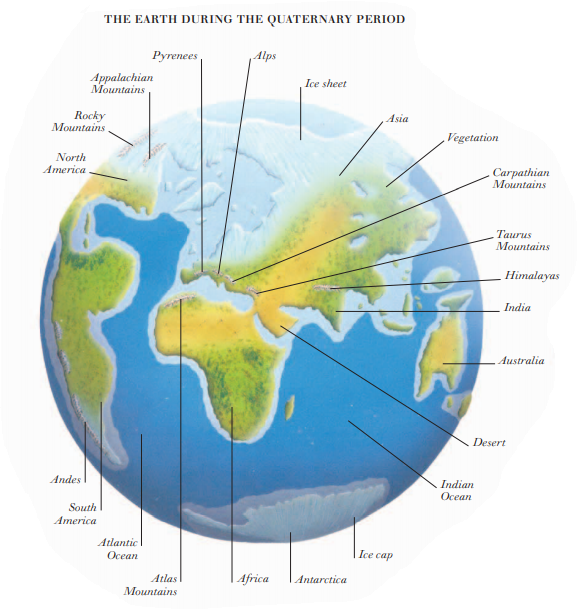
THE QUATERNARY PERIOD (1.6 million years ago–present) forms the second part of the Cenozoic era (65 million years ago–present): it has been characterized by alternating cold (glacial) and warm (interglacial) periods. During cold periods, ice sheets and glaciers have formed repeatedly on northern and southern continents. The cold environments in North America and Eurasia, and to a lesser extent in southern South America and parts of Australia, have caused the migration of many life-forms toward the Equator. Only the specialized ice age mammals such as Mammuthus and Coelodonta, with their thick wool and fat insulation, were suited to live in very cold climates. Humans developed throughout the Pleistocene period (1.6 million–10,000 years ago) in Africa and migrated northward into Europe and Asia. Modern humans, Homo sapiens, lived on the cold European continent 30,000 years ago and hunted other mammals. The end of the last ice age and the climatic changes that occurred about 10,000 years ago brought extinction to many Pleistocene mammals but enabled humans to flourish.






